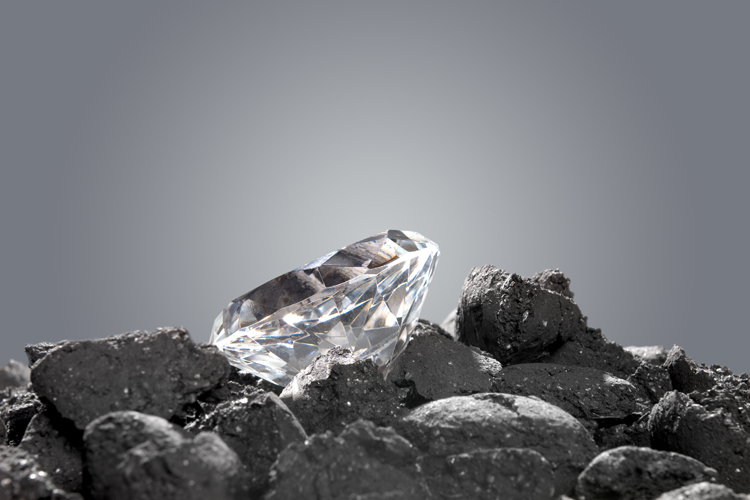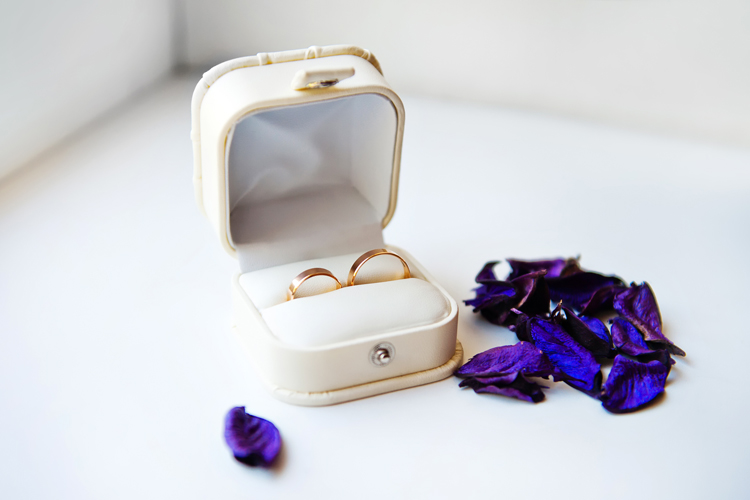Sapphire is a precious corundum variety famous for its pure, rich blue color.
Initially, only the blue corundum gemstones were considered sapphires, but since the 19th century, the name has been applied to all colored varieties, except red, which is called ruby (also corundum).
Along with ruby and emerald, sapphire is one of the three most precious colored gemstones.
The name sapphire comes from the Greek word sappheiros, meaning “blue stone,” and probably referred to lapis lazuli or other blue gems.
The majestic color of the blue sapphire is caused by the presence of titanium and iron. Shades of yellow, pale green, or brown are caused by iron impurities, and violet sapphires’ coloring agent is vanadium.
Small traces of chromium create pink sapphire.
Sapphire occurs in many colors, and all shades other than blue are collectively known as “fancy sapphires” and identified by their description: blue sapphire, green sapphire, or yellow sapphire, for example.
Rare and highly valuable orange-pink sapphires are called “padparadscha,” while colorless sapphire is known as leuko-sapphire.
Color-change sapphire is very unusual and special because of its metamorphic behavior under different light conditions.
Sapphires are formed in metamorphic and certain igneous rocks.
The hexagonal crystals often display color zoning and, just like rubies, are mostly mined in alluvial deposits, where they concentrate after weathering from their primary source.
Size and Color Matter
Large sapphires are rare.
The color is a very important aspect of a sapphire’s value. Generally, the stone’s value increases with color intensity and uniformity.
This is particularly true for the alluring blue sapphire.
The most desirable hue for blue sapphire is pure, intense, and velvety medium to medium dark blue.
Pieces with an intense and uniform blue color and high color saturation, which does not compromise their brightness, are the most expensive.
The primary blue hue should be at least 85 percent, and the secondary hue must be under 15 percent.
Acceptable secondary hues are purple and violet, while green and gray undertones lessen the gem’s value.
The presence of rutile needle inclusions (silk) may cause the rare star-like effect (asterism), shown when the gem is cut en cabochon.
The largest blue star sapphire is The Star of Adam, weighing an exceptional 1404.49 carats.
The most prized sapphires came from Kashmir in India, but the deposits apparently have been worn out.
The main deposits of sapphire are located in Australia, Myanmar, Sri Lanka, Thailand, and the USA. Brazil, Cambodia, Vietnam, Madagascar, Zimbabwe, Malawi, and Nigeria are all significant sources.
A Royal Precious Gemstone
Sapphire is a 9 on the Mohs scale of hardness, close to the diamond’s perfect hardness.
The stunning brilliance of the transparent gems is usually enhanced by a brilliant cut, while star sapphire and other more opaque pieces are cut en cabochon.
Synthetic sapphires have been produced on large scale for the electronics industry, and since 1947 gem-quality synthetic sapphires have been marketed.
Blue sapphires may be confused with benitoite, iolite, indicolite, spinel, tanzanite, topaz, or zircon.
Sapphires are closely associated with royalty, aristocracy, and religion.
Moses got the Ten Commandments on a sapphire plate; the British Crown Jewels are full of sapphires, and the high priests wear the precious blue gem in their vestments.
The stone of joy, protection, and destiny, blue sapphire was believed to cure eye diseases by the Greeks and to be an antidote to poison in Medieval times.
Its magic blue color enhances hope and lightens the path of its wearer.
Light blue sapphires are believed to balance Vishuddha (the fifth primary chakra), while dark blue sapphires open Ajna (the sixth primary chakra), according to the Hindu tradition.
Famous Sapphires
- The Star of Adam;
- The Logan Sapphire;
- The Queen Marie of Romania Sapphire;
- The Ruspoli Sapphire;
- The Star of Asia Star Sapphire;
- The Star of Bombay: given to Mary Pickford by Douglas Fairbanks, Sr;
- The Star of India;
- The Stuart Sapphire;
- The Black Star of Queensland – the world’s largest sapphire, weighing 733 carats (146.6 grams);
Sapphire | Physical Properties
Chemical Composition: Al2 O3
Cleavage: None
Color: Blue, Colorless, Pink, Orange, Yellow, Green, Purple, Black
Crystal System: Hexagonal, Trigonal
Fracture: Conchoidal to Uneven
Luster: Adamantine to Vitreous
Mohs Hardness: 9
Specific Gravity: 4.0-4.1
Transparency: Transparent to Translucent




